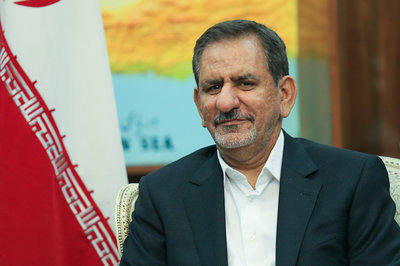The government has yet to come up with a solution to cut subsidy payouts for the rich families and, therefore, will continue allocating the handouts proportionally to all applicants, First Vice-President Es’haq Jahangiri has said.
The Rouhani administration seeks to amend the subsidy reform plan -- which it inherited from the government of former president Mahmoud Ahmadinejad. The plan includes cuts in subsidies for various commodities. Many experts believed that these unsustainable subsidies encouraged waste among goods, including in the production sector, ranging from gasoline to bread, suggesting that the traditional subsidization program must be stopped and that the only way to do that was to redirect subsidies.
The subsidy reform plan redirects much of the savings to cash handouts paid to each Iranian household. However, the incumbent has faced difficulties with identifying and removing Iran’s richest citizens.
The government asked high-income earners to refrain from receiving the cash subsidies in favor of the low income earners and to support the government in overcoming the tough economic conditions; however, the move was not welcomed by the majority of applicants and almost 90% of households registered in the second phase of the subsidy applications.
“The only practical way left for the government is to identify the wealthy and cut their subsidies, although the act may draw strong criticism from the media,” Jahangiri said. “The main challenge for the government is how to shorten the list by removing those who are do not really need financial support.”
Some experts believe that since the second phase of the subsidy reform plan coincided with a rise in prices of energy-laden products, the majority of the households registered for the second term of the government’s financial support. Contrary to the expectations of the government, the number of people who declined to register was few.
“It would have been a better option if the rich would opt out instead of the government having to identify those who do not qualify as disadvantaged households through cumbersome procedures,” Jahangiri stated. “So, for the being, we have no option but to continue with the handouts scheme that is the product of another administration.”
The subsidy reform plan was passed by the parliament in January of 2010. The government of Ahmadinejad described the plan as the “biggest surgery” to the nation’s economy in half a century and “one of the most important undertakings in Iran’s recent economic history.” The main objective of the plan has been to replace subsidies on food and energy (80% of total) with targeted social assistance, in accordance with the Fifth Five-Year Economic Development Plan (2011-2016).


